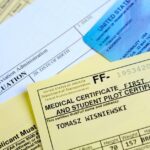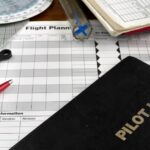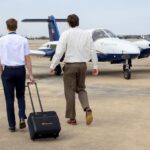Even in the early days of aviation, the reduction of pilot workload was identified as an important path to increasing safety. As a result, the first autopilot was released in 1912 by the Sperry Corporation, just nine years after the Wright brothers’ first flight. While this 75-pound contraption would be considered inaccurate by today’s standards, this revolutionary design allowed an aircraft to automatically maintain a desired compass heading and altitude by combining a gyroscopic heading indicator and attitude indicator on hydraulically operated elevators and rudders.
While the same basic principles used in this original design are still used today, modern technology has taken autopilots to new levels that were unimaginable in 1912. While these advancements have been proven to reduce pilot workload and help increase safety, pilots need to understand their limitations and the possible negative effects of over-reliance.
Modern autopilot systems are a sophisticated combination of sensors, actuators, and computer algorithms designed to control an aircraft in flight without direct human intervention and can be classified into one of three basic types:
Single-Axis: Controls the aircraft about the roll axis by movement of the ailerons.
Two-Axis: Controls the aircraft about the pitch and roll axes by movement of the ailerons and elevators.
Three-Axis: Controls the aircraft in roll, pitch, and yaw, by movement of the ailerons, elevators, and rudder.
Autopilots typically consist of three primary components: the control system, the guidance system, and the navigation system.
Control System: Receives input from the flight instruments and navigation systems to control the aircraft’s flight controls using servo motors or actuators, to change or maintain the aircraft’s attitude, altitude, and heading.
Guidance System: The guidance system determines the desired flight path based on input from the navigation system and pilot commands. It then makes necessary adjustments to maintain the aircraft on the desired course.
Navigation System: Uses a combination of GPS, gyroscopes, accelerometers, and other sensors, the navigation system monitors the aircraft’s position relative to its intended flight path and works with the guidance system to maintain pre-programmed routes.
The decision to engage the autopilot should be based on several factors, including pilot workload, flight duration, weather conditions, and safety considerations. Autopilots can enhance flight safety by mitigating the effects of pilot error or spatial disorientation and are excellent tools for alleviating pilot workload during long flights or in busy airspace. However, over-reliance on this technology is an increasing concern in the aviation industry. Modern autopilot systems are incredibly capable and reliable, but they also have their limitations and unintended consequences. It is important that pilots remain vigilant and capable of manually flying the aircraft when necessary.
Possible negative effects of autopilot over-reliance can include:
Automation Bias: Pilots may develop a trust bias towards automated systems, assuming they will always function correctly and overlook potential errors or malfunctions.
Skill Degradation: Lack of regular practice in manual flying can lead to skill degradation among pilots, making them less confident and proficient in handling the aircraft manually.
Complacency: When flights are routine and uneventful, pilots may become complacent and less attentive, relying heavily on autopilot systems to handle the workload.
It is important for pilots to understand that autopilots are a tool to help them manage the airplane, not something to be relied upon. Receiving scenario-based training that demonstrates how to handle technological failures is crucial to finding the balance between automation and manual flying skills in an increasingly automated world.










